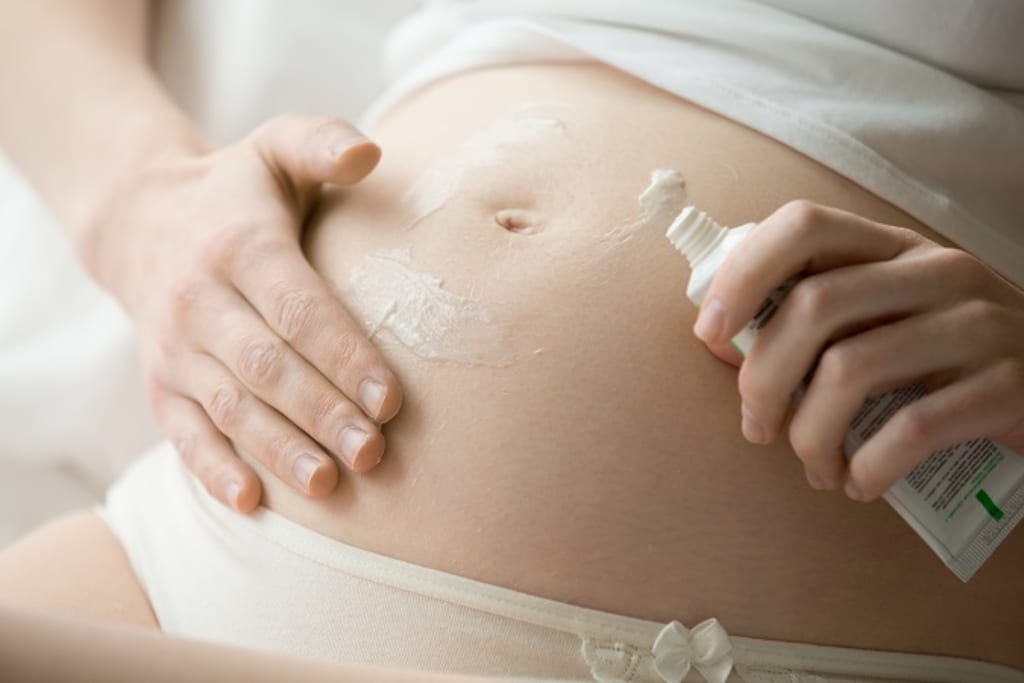
Stretch mark is a type of scar that develops when our skin stretches or shrinks quickly. The abrupt change causes the collagen and elastin to rupture which support our skin. As the skin heals, stretch marks appear.
Not everyone develops these marks on their skin. You may also have a higher risk if people in your family get stretch marks.
When stretch marks first appear, they tend to be red, purple, pink, reddish-brown, or dark brown, depending on your skin colour. Early stretch marks may feel slightly raised and can be itchy.
Causes and risk factors
Common causes of skin stretching include:
• Pregnancy: Between 50-90 % of women who are pregnant experience stretchmarks during or after child birth.
• Puberty: Rapid growth is typical in young people going through puberty. This can lead to stretch marks.
• Rapid weight gain/loss: Putting on/ losing a lot of weight in a short space of time can cause stretch marks.
• Medical conditions: Certain conditions can cause stretch marks, such as Marfan syndrome and Cushing’s syndrome. Marfan syndrome can lead to decreased elasticity in the skin tissue, and Cushing’s syndrome can lead the body to produce too much of a hormone that leads to rapid weight gain and skin fragility.
• Corticosteroid use: Prolonged use of corticosteroid creams and lotions can decrease levels of collagen in the skin. Collagen strengthens and supports the skin, and a reduced amount can increase the risk of stretch marks.
The skin consists of three key layers. Stretch marks form in the dermis, or middle layer, when the connective tissue is stretched beyond the limits of its elasticity. This is normally due to rapid expansion or contraction of the skin.
As the body grows, the connecting fibres in the dermis slowly stretch to accommodate slow growth. However, rapid growth leads to sudden stretching. This causes the dermis to tear, allowing deeper layers of skin to show through.
Risk factors
A number of risk factors have been associated with the development of stretch marks, but the evidence varies.
The risk factors for developing stretch marks could be linked to:
• family history
• chronic diseases
• body mass index (BMI) before pregnancy
• birthweight of the child in women who are pregnant
These findings can be explained by the greater degrees of skin stretching in obese women with bigger babies, and by age-related changes in skin collagen and connective tissue that affect the likelihood of tearing.
What can get rid of stretch marks?
Stretch mark creams, lotions, and gels: Researchers have studied many of the creams, lotions, and gels sold to treat stretch marks.
One such product is “The Babymama Oil”. It is made of rosehip oil, lavender oil, and sea buckthorn oil. These oils seep deep into your skin and increase the production of collagen which helps improve skin regeneration. The cocoa butter, shea butter, and green tea make up the perfect combination to keep your skin moisturized and supple. This oil is all natural and free of harmful chemicals.
Retinol, there are various types of retinol, that may also help fade early stretch marks.
If all these creams do not clear up your stretch marks (in most cases they will) the next best step is to consult a dermatologist.
Procedures that dermatologists perform: Dermatologists use the following procedures to make stretch marks less noticeable, but none of these can get rid of stretch marks:
• Chemical peel
• Laser therapy
• Microdermabrasion
• Radiofrequency
• Ultrasound
To give you the best results, your dermatologist may use more than one procedure. For example: your dermatologist may treat you with radiofrequency and a pulse dye laser.
With all procedures, side effects are possible. In the skilled hands of a board-certified dermatologist, side effects tend to be minor and temporary. It’s common to have some redness and swelling after a procedure. The redness and swelling tend to disappear in a few hours or days.
A dermatologist can tell you if any of these treatments would be suitable for you, given your health, age, and how long you’ve had the stretch marks and would guide you best.





Comments
There are no comments for this story
Be the first to respond and start the conversation.